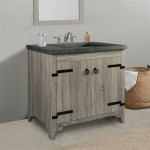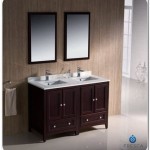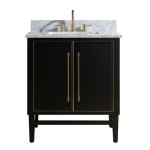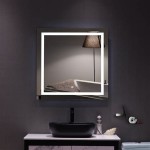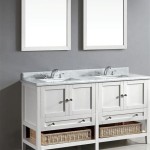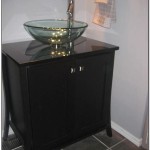Vanity Lights for Large Mirrors: Illuminating Your Space with Precision
Vanity lights for large mirrors are more than just sources of illumination; they are integral components of functional and aesthetically pleasing interior design. The correct selection of vanity lighting can transform a bathroom, dressing room, or makeup area from a dimly lit space into a bright, inviting, and efficient environment. When dealing with large mirrors, the importance of carefully considered lighting solutions is amplified. Insufficient or poorly placed lighting can result in shadows, uneven illumination, and ultimately, a compromised ability to perform tasks requiring visual accuracy, such as applying makeup or grooming.
This article explores the key considerations for choosing vanity lights for large mirrors, focusing on factors such as light source, style, placement, and functionality. The goal is to provide a comprehensive guide to help individuals make informed decisions that optimize both the aesthetic appeal and the practical utility of their space.
Understanding the Importance of Light Quality
The quality of light emitted by vanity lights is paramount, particularly when working with large mirrors. Light quality encompasses several key attributes, including color temperature, color rendering index (CRI), and lumen output. These factors collectively determine how accurately colors are perceived and how well the illuminated space is rendered.
Color temperature, measured in Kelvin (K), describes the warmth or coolness of the light. Lower Kelvin values (e.g., 2700K-3000K) produce a warm, yellowish light, while higher Kelvin values (e.g., 4000K-5000K) produce a cool, bluish light. For vanity lighting, a color temperature between 3000K and 4000K is generally recommended. This range provides a balance between warmth and brightness, creating a comfortable and natural-looking illumination suitable for tasks like makeup application.
The Color Rendering Index (CRI) measures how accurately a light source renders colors compared to natural sunlight, which has a CRI of 100. A higher CRI indicates more accurate color rendering. For vanity lights, choosing options with a CRI of 80 or higher is essential. This ensures that colors are accurately represented, preventing makeup from appearing different under various lighting conditions.
Lumen output refers to the brightness of the light source. The appropriate lumen output will depend on the size of the mirror and the overall size of the room. Insufficient lumens will result in a dim and inadequately lit space, while excessive lumens can create glare and discomfort. Generally, a combined lumen output of 400-800 lumens per foot of vanity space is a good starting point, but this should be adjusted based on individual preferences and the specific characteristics of the space.
Different types of light sources offer varying degrees of light quality. Incandescent bulbs, while providing a warm light, are energy-inefficient and have a relatively low CRI. Halogen bulbs offer better color rendering than incandescent bulbs but are also energy-intensive. LED (Light Emitting Diode) bulbs are the most energy-efficient option and are increasingly available with high CRI ratings and a wide range of color temperatures. For vanity lights, LED bulbs are generally the preferred choice due to their energy efficiency, long lifespan, and superior light quality.
When selecting LED bulbs, it is crucial to ensure they are dimmable. Dimmable lighting allows for adjusting the light intensity based on the task at hand or the desired ambiance. This flexibility is particularly useful in vanity areas where lighting needs may vary throughout the day.
Selecting the Right Style and Configuration
The style and configuration of vanity lights play a significant role in both the aesthetic appeal and the functional effectiveness of the lighting scheme. Numerous options are available, each with its own advantages and disadvantages. The choice will depend on the overall design of the space, the size and shape of the mirror, and individual preferences.
Linear vanity lights, also known as bar lights, are a popular choice for large mirrors. These fixtures typically consist of a long, horizontal bar with multiple light sources evenly spaced along its length. Linear vanity lights provide uniform illumination across the entire surface of the mirror, minimizing shadows and creating a balanced lighting effect.
Sconces, mounted on either side of the mirror, are another effective option. Sconces offer a more traditional and elegant look and can be positioned to provide direct lighting onto the face. When using sconces, it is important to ensure they are mounted at eye level to avoid casting unflattering shadows. Choosing sconces with frosted glass or fabric shades can help diffuse the light and create a softer, more flattering illumination.
Pendant lights, suspended from the ceiling above the mirror, can add a touch of sophistication and visual interest to the vanity area. However, pendant lights are generally not the most practical choice for primary vanity lighting, as they can cast shadows and obstruct the view of the mirror. They are better suited for accent lighting or for supplementing other light sources.
Integrated LED mirrors, which incorporate LED lighting directly into the mirror itself, are becoming increasingly popular. These mirrors offer a sleek and modern look and provide even, shadow-free illumination. Integrated LED mirrors are available in a variety of sizes and shapes, making them a versatile option for various vanity spaces.
When selecting the style and configuration of vanity lights, consider the overall design of the space. Choose fixtures that complement the existing décor and architectural features. For example, in a modern bathroom with clean lines and minimalist design, a linear LED vanity light or an integrated LED mirror would be a suitable choice. In a more traditional bathroom, sconces with classic detailing or a pendant light with a decorative shade might be more appropriate.
Optimizing Placement for Effective Illumination
The placement of vanity lights is critical to achieving effective and flattering illumination. Incorrect placement can result in shadows, glare, and uneven lighting, making it difficult to perform tasks requiring visual accuracy. The ideal placement will depend on the size and shape of the mirror, the style of the vanity lights, and the overall layout of the space.
For linear vanity lights, the optimal placement is typically above the mirror, centered horizontally and positioned to provide even illumination across the entire surface. The light fixture should be mounted high enough to avoid casting shadows on the face but low enough to provide adequate illumination. A general guideline is to position the bottom edge of the light fixture approximately 6-8 inches above the top edge of the mirror.
When using sconces, they should be mounted on either side of the mirror at eye level. The distance between the sconces will depend on the width of the mirror, but a general guideline is to position them approximately 30-40 inches apart. Ensure the sconces are mounted symmetrically and at the same height to create a balanced and visually appealing effect.
For pendant lights, they should be hung at a height that allows them to provide accent lighting without obstructing the view of the mirror or casting shadows on the face. A general guideline is to hang pendant lights approximately 12-18 inches below the ceiling. The number of pendant lights will depend on the size of the mirror and the desired level of illumination.
When working with large mirrors, it may be necessary to combine different types of vanity lights to achieve optimal illumination. For example, a linear vanity light above the mirror can be combined with sconces on either side to provide both general and direct lighting. This combination can help eliminate shadows and create a more balanced and flattering illumination.
In addition to the placement of the light fixtures themselves, it is also important to consider the positioning of the mirror in relation to other sources of light in the room. Avoid placing the mirror directly opposite a window or other strong light source, as this can create glare and make it difficult to see clearly. If possible, position the mirror on a wall that is perpendicular to the window to minimize glare and maximize natural light.
Finally, always consider the electrical requirements when planning the placement of vanity lights. Ensure that there are sufficient electrical outlets and wiring to accommodate the desired light fixtures. If necessary, consult with a qualified electrician to ensure that the electrical work is performed safely and in compliance with local codes.
By carefully considering these factors, individuals can select and position vanity lights for large mirrors in a manner that optimizes both the aesthetic appeal and the functional utility of their space.

Apmir 88 In W X 38 H Large Rectangular Frameless Double Led Lights Anti Fog Wall Bathroom Vanity Mirror Tempered Glass L001ac22396

Toolkiss 48 In W X 36 H Large Rectangular Frameless Led Light Anti Fog Wall Bathroom Vanity Mirror Super Bright

Large Dual Led Wall Mirror Bathroom Mirrors Vanity Makeup Anti Fog Waterproof Hd

How To Choose Bathroom Lighting The Light House Gallery

Dropship Brushed Nickel Finish Vintage Crystal Vanity Light Elegant 5 Bathroom Mirror Fixture With Clear Glass Shades No Bulbs To Sell At A Lower Doba

Keonjinn 23 In W X 18 H Large Hollywood Vanity Mirror Light Makeup Dimmable Lighted For Table White Frame Hlwjz 5845wh The Home

Wisfor 47 In W X 24 H Large Rectangular Frameless Led Light Anti Fog Wall Bathroom Vanity Mirror Dual Front Backlit Mr C1260 The Home

60x31 Large Led Bathroom Vanity Mirror With Front Lights Backlit Dimmable Hd

Mirror And Light Set Bathroom Pendant Shade Large Wall Rustic Decor Cage Fixture Etsy

Large Bathroom Vanity Mirror With Led Lighted Edges Impeccable Series
